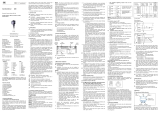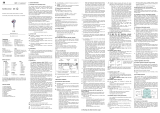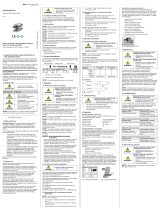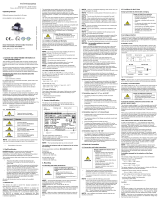
EN
Operating Manual
Electronic Pressure Switch DS 2XX for IS-areas
AX4-DS 200, AX4-DS 200 P, AX4-DS 201,
AX4-DS 201 P, AX4-DS 202, AX4-DS 210,
AX4-DS 217
Headquarters Eastern Europe
BD SENSORS s.r.o.
Hradištská 817
CZ - 687 08 Buchlovice
Czech Republic
Tel.: +42 (0) 572-4110 11
Fax: +42 (0) 572-4114 97
Headquarters Western Europe
BD SENSORS GmbH
BD-Sensors-Str. 1
D - 95199 Thierstein
Germany
Tel.: +49 (0) 9235-9811-0
Fax: +49 (0) 9235-9811-11
Russia
BD SENSORS RUS
39a, Varshavskoe shosse
RU - Moscow 117105
Russia
Tel.: +7 (0) 95-380 1683
Fax: +7 (0) 95-380 1681
China
BD SENSORS China Co, Ltd.
Room B, 2nd Floor, Building 10,
No. 1188 Lianhang Rd.
201112 Shanghai,
China
Tel.: +86 (0) 21-51600 190
Fax: +86 (0) 21-33600 613
further agencies in:
EUROPE
Belgium
Denmark
Finland
France
Great Britain
Greece
Italy
Lithuania
Luxemburg
Netherlands
Norway
Poland
Portugal
Romania
Sweden
Switzerland
Slovakia
Spain
Turkey
UK
Ukraine
AFRICA
Egypt
South Africa
ASIA
India
Iran
Israel
Japan
Kazakhstan
Malaysia
Singapore
Taiwan
Thailand
Vietnam
AUSTRALIA
The addresses of our distribution partners are listed on our
homepage www.bdsensors.com. It is possible to download
data sheets, operating manuals, ordering codes and certifi-
cates, as well.
Table of contents
1. General information
2. Product identification
3. Mechanical installation
4. Special regulations for IS-Areas
5. Electrical Installation
6. Initial start-up
7. Operation
8. Placing out of service
9. Maintenance
10. Service / Repair
11. Disposal
12. Warranty conditions
13. Declaration of conformity / CE
1. General information
1.1 Information on the operating manual
This operating manual contains important information on
proper usage of the device. Read this operating manual
carefully before installing and starting up the pressure
measuring device.
Adhere to the safety notes and operating instructions which
are given in the operating manual. Additionally applicable
regulations regarding occupational safety, accident preven-
tion as well as national installation standards and engineer-
ing rules must be complied with!
For the installation, maintenance and cleaning of the device,
you must absolutely observe the relevant regulations and
stipulations on explosion protection (VDE 0160, VDE 0165 or
EN 60079-14) as well as the occupational safety provisions.
The device was constructed acc. to standards
EN60079-0:2018, EN60079-11:2012, EN 60079-
26:2015.
This operating manual is part of the device, must be kept
nearest its location, always accessible to all employees.
This operating manual is copyrighted. The contents of this
operating manual reflect the version available at the time of
printing. It has been issued to our best knowledge. BD
SENSORS is not liable for any incorrect statements and their
effects.
– Technical modifications reserved –
1.2 Symbols used
DANGER! – dangerous situation, which may result in
death or serious injuries
WARNING! – potentially dangerous situation, which
may result in death or serious injuries
CAUTION! – potentially dangerous situation, which may
result in minor injuries
! CAUTION! – potentially dangerous situation, which may
result in physical damage
NOTE – tips and information to ensure a failure-free
operation
1.3 Target group
WARNING! To avoid operator hazards and damages of
the device, the following instructions have to be worked
out by qualified technical personnel.
1.4 Limitation of liability
By non-observance of the operating manual, inappropriate
use, modification or damage, no liability is assumed and
warranty claims will be excluded.
1.5 Intended use
- The device is intended for converting the physical pa-
rameter of pressure into an electric signal. The current
system pressure is shown in a 4-digit LED-display.
The electronic pressure switch DS 2XX has been devel-
oped, according to the type for applications, for absolute,
vacuum and overpressure measurement. Depending on
the device and the mechanical connection it is suitable for
various areas of use.
The device has to be used only for this purpose, consider-
ing the following information.
Devices with 3-A and / or EHEDG certified process con-
nection have been developed especially for applications in
food and pharmaceutical industry. The process connection
is hygienic and can be sterilized.
Permissible measuring and cleaning media are gases or
liquids, which are compatible with the media wetted parts
of the device -
according to data sheet) and your system. This must be
ensured for the application.
- This operating manual applies to devices with explosion
protection approval and is intended for the use in IS-
areas. A device has an explosion protection approval if
this has been specified in the purchase order and con-
firmed in our order confirmation. In addition, the manu-
facturing label contains the -symbol.
- It is the operator's responsibility to check and verify the
suitability of the device for the intended application. If
any doubts remain, please contact our sales department
in order to ensure proper usage. BD SENSORS is not
liable for any incorrect selections and their effects!
- Permissible media are gases or liquids, which are com-
patible with the media wetted parts described in the data
sheet. In addition it has to be ensured, that this medium
is compatible with the media wetted parts.
- The technical data listed in the current data sheet are
engaging. If the data sheet is not available, please order
or download it from our homepage.
(http://www.bdsensors.com)
WARNING! – Danger through improper usage!
- Only use the device in permissible media and in
accordance with its in-tended use.
- Do not use the device as a ladder or climbing aid.
- The device must not be altered or modified in any way.
- BD|SENSORS is not liable for damage caused by
improper or incorrect use.
1.6 Limitation of liability and warranty
Failure to observe the instructions or technical regulations,
improper use and use not as intended, and alteration of or
damage to the device will result in the forfeiture of warranty
and liability claims.
1.7 Safe handling
NOTE - Do not use any force when installing the device to
prevent damage of the device and the plant!
NOTE - Treat the device with care both in the packed and
unpacked condition!
NOTE - Do not throw or drop the device!
NOTE - Excessive dust accumulation and complete
coverage with dust must be prevented!
NOTE - The device is state-of-the-art and is operationally
reliable. Residual hazards may originate from the device if it
is used or operated improperly.
NOTE - Never use the display as a mounting / dismoun-
ting aid, otherwise the device may be irreparably damaged.
For mounting or dismounting the device, only use the hexa-
gon on the pressure port.
1.8 Safety technical maximum values AX 14 - DS 2XX
Permissible temperatures for environment: -25 ... 70 °C
Ui = 28 V, Ii = 93 mA, Pi = 660 mW, Ci ≈ 0 nF, Li ≈ 0 μH plus
cable inductivities 1 μH/m and cable capacities
100 pF/m (for cable by factory)
1.9 Scope of delivery
Check that all parts listed in the scope of delivery are inc-
luded free of damage, and have been delivered according to
your purchase order:
1.10 UL approval (for devices with UL Marking)
The UL approval was effected by applying the US standards,
which also conform to the applicable Canadian standards on
safety.
Observe the following points so that the device meets the
requirements of the UL approval:
- only indoor usage
- maximum operating voltage: according to data sheet
- The device must be operated via a supply with energy
limita-tion (acc. to UL 61010) or an NEC Class 2 energy
supply.
1.11 Safety technical maximum values
AX4-DS 2XX: IBExU06ATEX1049 X
Permissible temperatures for environment: -25 ... 70 °C
Ui = 28 V, Ii = 93 mA, Pi = 660 mW, Ci ≈ 0 nF, Li ≈ 0 µH
plus cable inductivities 1 µH/m and cable capacities
100 pF/m (for cable by factory)
1.11.1. Special conditions for safe use
- No energy may be supply from the outside into the active
switching exits.
- The equipment designed with connector have to be
installed in such a way that the Degree of protection IP20
always will be kept.
- The safety and assembly notes contained in the operating
instructions and the ambient temperature range -25 °C to
+70 °C have to be observed.
1.12 Package contents
Please verify that all listed parts are undamaged included in
the delivery and check for consistency specified in your
order:
- electronic pressure switch, series DS 2XX
- for mechanical pressure ports DIN 3852: o-ring
(pre-assembled)
- this operating manual
2. Product identification
The device can be identified by its manufacturing label. It
provides the most important data. By the ordering code the
product can be clearly identified. The programme version of
the firmware, (e. g. P07) will appear for about 1 second in the
display after starting up the device. Please hold it ready for
inquiry calls.
Fig. 1 manufacturing label- example
! The manufacturing label must not be removed from the
device!
3. Mechanical installation
3.1 Mounting and safety instructions
WARNING! Install the device only when depressurized
and currentless!
WARNING! This device may only be installed by
qualified technical personnel who has read and under-
stood the operating manual!
DANGER! Caused by the explosion hazard following
instructions have to be complied with:
- The technical data listed in the EC type-
examination certificate are engaging. If the certifi-
cate is not available, please order or download it
from our homepage:
http://www.bdsensors.com
- Working on supplied (active) parts, except for in-
trinsically safe circuits, is principally prohibited dur-
ing an explosion hazard.
- Make sure that an equipotential bonding is in place
for the entire course of the line, both inside and
outside the intrinsic area.
- In case of increased danger of lightning strike or
damage by overvoltage, a stronger lightning pro-
tection should be planned.
- Observe the limiting values specified in the EC
type-examination certificate. (Capacitance and in-
ductance of the connection cable are not included
in the values.)
- The measuring point must be designed in such a
way that cavitation and pressure surges are
avoided.
- Make sure that the entire interconnection of intrin-
sically safe components remains intrinsically safe.
The operator is responsible for the intrinsic safety
of the overall system (installation of intrinsic parts).
- Do not mount the device in a pneumatic flow rate!
- Excessive dust deposits (over 5 mm) and a com-
plete dust covering must be avoided!
- The external circuit must prevent an external pow-
er-inflow to the contacts. Suitable signal separating
devices which fulfil this demand have to be used.
Oxygen
DANGER! Explosion hazard, with devices for oxygen
applications, when used improperly. To ensure a usage
without danger, the following points must be adhered to:
- Make sure, your device has been ordered and de-
livered as a special version for oxygen applica-
tions. You can check the manufacturing label (see
figure 1). If the ordering code ends with "007", then
the device is suitable for oxygen applications.
- At time of delivery the device is packed into a plas-
tic bag in order to prevent it from impurity. Please
observe the indication label "Device for oxygen,
unpack only directly before assembling". Also,
avoid any skin contacts during unpacking and as-
sembly, in order to prevent greasy residues on the
device.
- During installation, the respective explosion protec-
tion regulations have to be met.
- Note the entire design requirements meet the
standard demand of BAM (DIN 19247).
- For oxygen applications over 25 bar are recom-
mended pressure transmitter without seals.
- Transmitters with o-rings of 70 EPDM 281:
permissible maximum values: 15 bar/ 60° C and
10 bar/ 60 up to 90°C.
- Transmitters with o-rings of FKM Vi 567:
permissible maximum values: 15 bar/ 60° C.
! Handle this high-sensitive electronic precision
measuring device with care, both in packed and
unpacked condition!
! There are no modifications/changes to be made on the
device.
! Do not throw the package/device!
! To avoid damaging the diaphragm, remove packaging
and protective cap directly before starting assembly.
The delivered protective cap has to be stored!
! Place the protective cap on the pressure port again
immediately after disassembling.
! Handle the unprotected diaphragm very carefully - it is
very sensitive and may be easily damaged.
! Do not use any force when installing the device to pre-
vent damage of the device and the plant!
! The display and the plastic housing are equipped with
rotational limiters. Please do only rotate the display or
the housing within the limit.
! For installations outdoor and in damp areas following
these instructions:
- To prevent moisture admission in the plug the de-
vice should be installed electrically after mounting,
at once. Otherwise a moisture admission has to be
blocked e.g. by using a suitable protection cap.
(The ingress protection in the data sheet is valid for
the connected device.)
- Choose an assembly position, which allows the
flow-off of splashed water and condensation. Avoid
permanent fluid at sealing surfaces!
- When using a cable gland device, turn the outgoing
cable downwards. If the cable has to be turned
upwards, then point it downward so the moisture
can drain.
- Install the device in such a way that it is protected
from direct solar irradiation. Direct solar irradiation
can lead to the permissible operating temperature
being overstepped in the worst case. This is
prohibited for applications in IS-areas!
! For devices with gauge reference in the housing (small
hole next to the electrical connection), install the device
in such a way, that the gauge reference is protected
from dirt and moisture. Should the device be exposed to
fluid admission, the functionality will be blocked by the
gauge reference. An exact measurement in this condi-
tion is not possible. Furthermore this can lead to dam-
ages on the device.
! The permissible tightening torque depends on the con-
ditions on site (material and geometry of the mounting
point). The specified tightening torques for the pressure
switch must not be exceeded!
Take note that no inadmissibly high mechanical
stresses occur at the pressure port as a result of the
installation, since this may cause a shifting of the
characteristic curve or to the demage. This is especially
important for very small pressure ranges as well as for
devices with a pressure port made of plastic.
In hydraulic systems, position the device in such a way
that the pressure port points upward (ventilation).
Provide a cooling line when using the device in steam
piping.
If the device is installed with the pressure connection
up, it has to be made sure that no liquid drain off at the
case. Humidity and dirt can block the relative cover in
the case and it could lead to malfunctions through this.
Dust and dirt must be removed from the edge of the
thread connection of the electrical connection if re-
quired.
3.2 General installation steps
- Carefully remove the pressure measuring device from
the package and dispose of the package properly.
- Go ahead as detailed in the specific instructions below.
3.3 Installation steps for DIN 3852
DO NOT USE ANY ADDITIONAL SEALING MATERI-
ALS, LIKE YARN, HEMP OR TEFLON TAPE!
- Check to ensure the proper groove fitting of the o-ring
and additionally to ensure no damage to the o-ring.
- Ensure that the sealing surface of the taking part is
perfectly smooth and clean. (RZ 3.2)
- Screw the device into the corresponding thread by
hand.
- If you have a device with a knurled ring, the transmitter
has to be screwed in by hand only.
- Devices with a spanner flat have to be fully tightened
with an open-end wrench (wrench size of steel: G1/4":
approx. 5 Nm; G1/2": approx. 10 Nm; G3/4": approx. 15
Nm; G1": approx. 20 Nm; G1 1/2": approx. 25 Nm;
wrench size of plastic: max. 3 Nm).
- The indicated tightening torques must not be
exceeded!
3.4 Installation steps for EN 837
- Use a suitable seal, corresponding to the medium and
the pressure input (e. g. a cooper gasket).
- Ensure that the sealing surface of the taking part is
perfectly smooth and clean. (RZ 6.3)
- Screw the device into the corresponding thread by
hand.
- Tighten it with a wrench (for G1/4": approx. 20 Nm; for
G1/2": approx. 50 Nm).
- The indicated tightening torques must not be
exceeded!
G1/4" EN
837
p ≤ 600
bar
Counterpart has to be of steel
according to DIN 17440 with
strength Rp0.2 ≥ 190 N/mm2
G1/2" EN
837
p ≤ 1000
bar
G1/4" EN
837
p > 600
bar, p ≤
1000 bar
Counterpart has to be of
steel according to DIN
17440 with strength Rp0.2 ≥
260 N/mm2
G1/2" EN
837
p >
1000
bar, p ≤
1600 bar
NOTE - Please refer to data sheet or contact sales depart-
ment at BD SENSORS regarding max. permitted pressure of
device.
3.5 Installation steps for NPT
- Use a suitable seal (e. g. a PTFE-strip).
- Screw the device into the corresponding thread by
hand.
- Tighten it with a wrench (for 1/4" NPT: approx. 30 Nm;
for 1/2" NPT: approx. 70 Nm).
- The indicated tightening torques must not be
exceeded!
3.6 Installation steps for dairy pipe
- Check to ensure that the O-ring fits properly into the
intended groove in the mounting part.
- Centre the dairy pipe connection in the counterpart.
- Screw the cup nut onto the mounting part.
- Then tighten it with a hook wrench.
Chapter "3.10 have been noticed.
EHEDG conformity is only ensured in combination with an
approved seal. This is e.g.:
- ASEPTO-STAR k-flex upgrade seal by Kieselmann
GmbH
3.7 Installation steps for Clamp and Varivent
- Use a suitable seal corresponding to the medium and
the pressure input.
- Put the seal onto the corresponding mounting part.
- Centre the Clamp or Varivent connection on the fitting
counterpart with seal.
- Then fit the device with a suitable fastening element
(e. g. semi-ring or retractable ring clamp) according to
the supplier’s instructions.
EHEDG conformity is only ensured in combination with an
approved seal. This is e.g.:
for Clamp connections: T-ring seal from Combifit Internatio-
nal B.V.
- for Varivent connections: EPDM-O-ring which is FDA-
listed
- Note, that P40 can only be used for tank flanges.
3.8 Mounting steps for G1″ cone connection
- 1 Screw the device into the mating thread byhand (seal
produced metallically)
- 2 Then tighten it using an open-end wrench. Permis-
sible tightening torques for pressure switch: pN < 10 bar:
30 Nm; pN ≥ 10 bar: 60 Nm
3.9.Conditions for devices with 3-A symbol
The device or its connecting piece must be installed in such
a way that the surfaces are self-draining (permissible insta-
llation position 273° … 87°).
Make sure that the welding socket is mounted flush inside
the tank.
The user is responsible for:
the correct size of the seal and the choice of an elasto-meric
sealing material that complies with the 3-A and / or EHEDG
standard(s)
an easy to clean installation position of the pressure switch
with little dead space, as well as definition / verifi-cation /
validation of a suitable cleaning process
3.10 Conditions for devices with EHEDG certificate
Install the device according to the requirements given in
EHEDG Guidelines 8, 10 and 37. That is to mount the device
in a self-draining orientation. The device should be installed
flush to the process area. If mounting in a T-piece, the ratio
between the depth of the upstand (L) and the diameter (D) of
the upstand shall be L/D<1. If welded adapters are used, the
food contact surface must be smooth, and the welding has to
be done according to EHEDG Guideline 9 and 35. Suitable
pipe couplings and process connections must be applied
according to the EHEDG Position Paper. (List the available
ones.)
3.11 Positioning of the display module
The display module is rotatable so that clear readability is
guaranteed even on unusual installation positions. The
display module can be turned as shown below.
Fig. 2 display module
4. Special regulations for IS-Areas
4.1 Protection against electrostatic charge hazards
The devices partially consist of chargeable plastic compo-
nents. A potential electrostatic charge presents the danger of
spark generation and ignition. An electrostatic charge must
therefore be absolutely prevented.
Generally, a shielded cable must be used.
Avoid friction on the plastic surfaces!
Do not clean the device dry! Use, for example, a damp
cloth.
4.2 Overvoltage protection
If the pressure switch is used as electrical equipment of
category 1 G or 2 G, a suitable overvoltage protection device
must be connected in series (attend the valid regulations for
operating safety as well as EN60079-14).
4.3 Schematic circuit design
The operation of an intrinsically safe device in intrinsic safe
areas requires special care when selecting the necessary
Zener barrier or transmitter repeater devices to be able to
use the device’s characteristics to the full extent. The follow-
ing diagram shows a typical arrangement of power supply,
Zener barrier and pressure switch.
Fig. 3 Circuit diagram
4.4 Exemplary circuit description
The supply voltage of e. g. 24 VDC provided by the power
supply is led across the Zener barrier. The Zener barrier
contains series resistances and Zener diodes as protective
components. Subsequently, the operating voltage is applied
intrinsic safe area
contact
pressure switch
Supply
24 VDC
contact
+ VS
- VS
+ VS
- VS
VS
AX4-DS 200
DS 200P
74-06
www.bdsensors.cz
BA_DS2XX_EX_E_SRO
Ordering code
Connector
pinout
Type designation
Nominal
pressure
range
Signal
Serial
number
Equipment
category and zone,
Ex-designation
Safety specific technical
max. values
Number of EC type-
examination
certificate

BA_DS2XX_EX_E_SRO_15.03.2022
special menu 2 – offset compensation / position correction
set "0247";confirm menu item; if offset ≠ ambient pressure it is necessary to place the device under pressure
(pressure reference has to corresponding to the zero point of the pressure measuring range); push both buttons to
store the signal being emitted from the pressure switch as offset; in the display the set zero point will appear
although the sensor signal in the offset is displaced.
a position correction is necessary, if the installation position differs from the calibration position (otherwise this
can cause a little deviation of the signal, which gives a wrong value indication)
the analogue output signal (for devices with analogue output) is not affected by this change;
when displacing the offset, the full scale will also be displaced
special menu 3 – load defaults
set "0729; to load the defaults, push both buttons simultaneously
any changes carried out will be reset (password will be set on "0005")
special menu 4 – set password
set "0835"; confirm with both buttons; "SEtP" appears in the display; set the password using the ▲- or ▼-button
(0 ... 9999 are permissible, the code numbers 0238, 0247, 0729, 0835 are exempt); confirm the password by
pushing both buttons simultaneously
to the pressure switch and, depending on the pressure, a
particular signal current will flow.
4.5 Functional selection criteria for Zener barriers and
galvanic power supply
The minimum supply voltage V
S
min of the pressure switch
must not fall short since a correct function of the device can
otherwise not be guaranteed. The minimum supply voltage
has been defined in the respective product-specific data
sheet under "Analogue output (optionally) / Supply".
When using a galvanically insulated amplifier with a linear
bonding, please attend that the terminal voltage of the device
will decrease like it does with a Zener barrier. Furthermore, it
has to be attended that the supply of the pressure switch will
also decrease with an optionally used signal amplifier.
4.6 Test criteria for the selection of the Zener barrier
In order not to fall below V
S
min it is important to verify which
minimum supply voltage is available at full level control of the
pressure switch.
The technical data of the barrier will usually provide you with
the information needed for the selection of the Zener barrier.
However, the value can also be calculated. If a minimum
supply of 16 V is assumed, then – according to Ohm’s law –
a particular voltage drop will result on the series resistance of
the Zener barrier. If, for a pressure switch with PNP contact,
the contact is also activated, the additional current flowing
from the contact to the load resistor will also flow through the
Zener barrier or the output of a transmitter repeater. The
higher the load current, the lower the available minimum
operating voltage. In the diagram shown, the maximum
current can be calculated from the voltage difference
(Va
b
Barrier
e
max) between input and output of the Zener barrier
divided by the series resistance of the Zener barrier. The
maximum signal current must be subtracted from this value.
If the available residual current is smaller than the current
required at the contact, either a different barrier or a higher
supply voltage before the barrier should be chosen.
When selecting the power supply, the maximum operat-
ing conditions according to the EC type-examination
certificate must be observed. When assessing the pow-
er supply, please refer to their current data sheets to
ensure that the entire interconnection of intrinsically
safe components will remain intrinsically safe.
4.7 Calculation example for the selection of the Zener
barrier
The nominal voltage of the power supply in front of the Zener
barrier is 24 VDC 2%. This results in:
- greatest supply voltage:
VSup max = 24 V * 1.02 = 24.48 V
- smallest supply voltage:
VSup min = 24 V * 0.98 = 23.52 V
The minimum supply can be taken from the data sheet. It is
for example 16 V.
The series resistance of the Zener barrier is listed with
295 . The maximum voltage drop at the Zener barrier may
reach the following value:
Vab Barriere max = 23.52 V – 16 V = 7.52 V
To ensure that this condition is observed, the maximum
current may not exceed the following value:
Imax = 7.52 V : 295 = 25.49 mA
With pressure switches, the maximum current is made up of
the sum of signal current and switching current. There are
two approaches:
1. The measuring range of the pressure switch shall be
utilized in the range 0…100 %. A maximum signal cur-
rent of 20 mA is thereby generated. Based on the facts
above, the available residual current through the contact
is calculated as follows:
IRest 1 = 25.49 mA – 20 mA = 5.49 mA
2. The measuring range of a pressure switch at an ana-
logue output of 4 … 20 mA shall only be used in a spe-
cific range of e. g. 0 … 70 %. This results in a maximum
signal current:
ISignal max = i * 0.7 + iOffset = 16 mA * 0.7 + 4 mA =
15.2 mA
(with i = 20 mA – 4 mA and iOffset = 4 mA)
The available residual current through the contact amounts
to:
IRest 2 = 25.49 mA – 15.2 mA = 10.29 mA
Condition:
IRest ≥ Icontact
The switching current (current through the contact) may not
exceed the determined residual current since this will impair
the functionality of the device.
The switching current must be determined separately by
the user since it depends on the respective use case.
The switching current can either be calculated or meas-
ured at the contact.
Please note that no line resistances have been listed in
this calculation. However, these will lead to an addition-
al voltage drop that must be taken into account.
5. Electrical Installation
WARNING! Install the device only when depressurized
and currentless!
DANGER! Danger of explosion when surpassing the
maximum supply of 28 VDC!
Establish the electrical connection of the device according to
the technical data shown on the manufacturing label, the pin
configuration and the respective wiring diagram shown in the
data sheet.
Pin configuration
Electrical
connections
M12x1
plastic
(5-/8-pin)
M12x1
metal
(5-pin)
ISO
4400
cable-
colours
(DIN
47100)
Supply +
Supply –
Contact 1
1
3
4
1
3
4
1
2
3
wh (white)
bn (brown)
gr (grey)
Shield
via
pressure
port
plug-
housing/
pressure
port
ground
pin
gn/ye
(green/
yellow)
Wiring diagram
! For devices with cable gland as well as cable socket,
you have to make sure that the external diameter of the
used cable is within the allowed clamping range.
Moreover you have to ensure that it lies in the cable
gland firmly and cleftlessly!
! Please note for devices with ISO 4400 plug and cable
socket, that the socket has to be mounted properly to
ensure the ingress protection mentioned in the data
sheet. Please check if the delivered seal is placed
between plug and cable socket. After connecting the
cable fasten the cable socket on the device by using the
screw.
! For the installation of a device with cable outlet following
bending radiuses have to be complied with:
cable without ventilation tube:
static installation : 8-fold cable diameter
dynamic application: 12-fold cable diameter
cable with ventilation tube:
static installation : 10-fold cable diameter
dynamic application: 20-fold cable diameter
! Prevent the damage or removal of the PTFE filter which
is fixed over the end of the air tube on devices with
cable outlet and integrated air tube.
! For a clear identification, the intrinsically safe cables are
marked with light blue shrink tubing (over the cable in-
sulation). If the cable has to be modified (e. g. short-
ened) and the marking at the cable end has been lost in
the process, it must be restored (for example, by mark-
ing it again with light blue shrink tubing or an appropri-
ate identification sign).
For the electrical connection a shielded and twisted
multicore cable has to be used.
When using the pressure switch in combination with a
transmitter repeater with linear limit, the supply of the
device could fall below the minimum when completely
conducting the transmitter part. Please compare the
specification of your transmitter repeater with the cur-
rent data sheet of the pressure switch.
6. Initial start-up
WARNING! Before start-up, the user has to check for
proper installation and for any visible defects.
WARNING! The device can be started and operated by
authorized personnel only, who have read and under-
stood the operating manual!
WARNING! The device has to be used within the
technical specifications, only (compare the data in the
data sheet and the EC type-examination certificate)!
7. Operation
7.1 Operating and display elements
Fig. 4 touchpad
The device has, according to the order max. one LED which
is allocated to the contact. The LED will light up when the set
point has been reached and the contact is active. The
display of the measured value as well as the configuration of
the individual parameters occurs menu-driven via the seven-
segment display.
7.2 Configuration
The menu system is a closed system allowing you to scroll
both forward and backward through the individual set-up
menus to navigate to the desired setting item. All settings are
permanently stored in an EEPROM and therefore available
again even after disconnecting from the supply voltage. The
structure of the menu system is the same for all types of
devices, regardless of the number of contacts. However,
they only differ by the number of menus. Following figure and
the menu list shows all possible menus.
7.4. Description of hysteresis and compare mode
Fig. 5 compare mode Fig. 6 compare mode
inverted
7.3 Password system
To avoid a configuration by unauthorized persons, the
possibility is given to lock the device by an access protection.
More information is given in menu 1 of the menu list.
Please follow the manual meticulously and remember
that changes of the adjustable parameters (switch-on
point, switch-off point, etc.) become only effective after
pushing both buttons simultaneously and leaving the
menu item.
8. Placing out of service
WARNING! Disassemble the device only in current and
pressure less condition! Check before disassembly, if it
is necessary to drained off the media before disman-
tling!
WARNING! Depending on the medium, it may cause
danger for the user. Comply therefore with adequate
precautions for purification.
9. Maintenance
DANGER! The operator is obligated to observe the
information about operation and maintenance work on
the warning signs possibly affixed to the device.
During the cleaning processes, note the compatibility of
the cleaning media used in combination with the media-
wetted materials of the pressure measuring devices.
Permissible concentrations and temperatures must be
observed. Verification/ validation by the user is essen-
tial.
Deposits or contamination may occur on the diaphragm/
pres-sure port in case of certain media. Depending on
kind and quality of the process, suitable cyclical mainte-
nance intervals must be specified by the operator. As
part of this, regular checks must be carried out regar-
ding corrosion, damage of dia-phragm/seal(s) and sig-
nal shift. A periodical replacement of the seal(s) may be
necessary. In principle, this device is maintenance-free.
If desired, the housing of the device can be cleaned us-
ing a damp cloth and non-aggressive cleaning solutions,
in switched-off state.
With certain media, however, the diaphragm may be polluted
or coated with deposit. It is recommended to define corre-
sponding service intervals for control. After placing the
device out of service correctly, the diaphragm can usually be
cleaned carefully with a non-aggressive cleaning solution
and a soft brush or sponge. If the diaphragm is calcified, it is
recommended to send the device to BD SENSORS for
decalcification. Please note the chapter “Service/Repair”
below.
! A false cleaning of the device can cause irreparable
damages on the diaphragm. Therefore never use point-
ed objects or pressured air for cleaning the diaphragm.
! For EHEDG certified devices in tanks, the cleaning
device must be positioned in such a way that the sensor
is directly assessed and wetted for cleaning. The device
has been developed for Cleaning in Place (CIP) applica-
tions and must not be dismantled for cleaning.
10. Service / Repair
10.1 Recalibration
During the life-time of the device, the offset or span value
may shift. As a consequence, a deviating signal value in
reference to the nominal pressure range starting point or end
point may be transmitted. If one of these two phenomena
occurs after prolonged use, a recalibration is recommended
to ensure furthermore high accuracy.
10.2 Return
Before every return of your device, whether for recalibration,
decalcification, modifications or repair, it has to be cleaned
carefully and packed shatter-proofed. You have to enclose a
notice of return with detailed defect description when sending
the device. If your device came in contact with harmful
substances, a declaration of decontamination is additionally
required. Appropriate forms can be downloaded from our
homepage www.bdsensors.com. Should you dispatch a
device without a declaration of decontamination and if there
are any doubts in our service department regarding the used
medium, repair will not be started until an acceptable
declaration is sent.
If the device came in contact with hazardous
substances, certain precautions have to be
complied with for purification!
11. Disposal
The device has to be disposed of according to
the European Directives 2002/96/EC and
2003/108/EC (on waste electrical and electronic
equipment). It is prohibited to place electrical and
electronic equipment in domestic refuse!
WARNING! Depending on the used medium, deposit on
the device may cause danger for the user and the envi-
ronment. Comply with adequate precautions for purifica-
tion and dispose of it properly.
enu list
Menu list
12. Warranty conditions
The warranty conditions are subject to the legal warranty
period of 24 months from the date of delivery. In case of
improper use, modifications of or damages to the device, we
do not accept warranty claims. Damaged diaphragms will
also not be accepted. Furthermore, defects due to normal
wear are not subject to warranty services.
13. Declaration of conformity / CE
The delivered device fulfils all legal requirements.
The applied directives, harmonised standards and docu-
ments are listed in the EC declaration of conformity, which is
available online at: http://www.bdsensors.com.
Additionally, the operational safety is confirmed by the CE
sign on the manufacturing label.
Structure of the system
- ▲-button: move in the menu system (forward) or increase the displayed value; it will also lead you to the operating mode
(beginning with menu 1)
- ▼-button: move in the menu system (backward) or decrease the displayed value; it will also lead you to the operating mode
(beginning with the last menu)
- both buttons simultaneously: confirm the menu items and set values
to increase the counting speed, when setting the values: keeping the respective button pushed for more than 5 seconds
Execution of configuration:
- set the desired menu item by pushing the ▲- or ▼-button
- activate the set menu item by pushing both buttons simultaneously
- set the desired value or select one of the offered settings by using the ▲- or ▼-button
- store/confirm the set value/selected setting and exit the menu by pushing both buttons simultaneously
menu 1 – access protection
PAon password active to deactivate: set password
PAof password inactive to activate: set password
default setting for the password is "0005"; modification of the password is described in special menu 4
menu 2 – set decimal point position
menus 3 and 4 – set zero point / end point
the device has been configured correctly before delivery, so a later setting of a 2-wire device is only necessary, if a
differing displayed value is desired (e. g. 0 ... 100 %)
menu 5 – set damping
this function allows getting a constant display value although the measuring values may vary considerably; the time
constant for a simulated low-pass filter can be set (0.3 up to 30 sec permissible)
menu 6 – exceeding message
set "on" or "off"
menus 7 – set switch-on point
set the values, for the activation of contact 1 (S1on)
menus 8 – set switch-off point
set the values, for the deactivation of contact 1 (S1oF)
menus 9 – select hysteresis or compare mode
select hysteresis mode (HY 1) or compare mode (CP 1) for contact 1
compare "7.4 Description of hysteresis and compare mode"
menus 10 – set switch-on delay
set the value of the switch-on delay after reaching contact 1 (d1on)
(0 up to 100 sec permissible)
menus 11 – set switch-off delay
set the value of the delay after reaching switch-of point 1 (d1of)
(0 up to 100 sec permissible)
menus 12 and 13 – maximum / minimum pressure display
view high pressure (HIPr) or low pressure (LoPr) during the measurement process
(the value will not remain stored if the power supply is interrupted)
to erase: push both buttons again within one second
menu 14 – measured value update (display)
set the length of the update cycles for the display (0.0 up to 10 sec permissible)
special menus
(to access a special menu, select the menu item "PAof" with the ▲- or ▼-button and confirm it; "1" appears in the display)
special menu 1 – full scale compensation
for full scale compensation, which is necessary if the indicated value for full scale differs from the real full scale
value in the application: a compensation is only possible with a respective reference source, if the deviation of the
measured value is within defined limits; set "0238"; confirm with both buttons; "FS S" will appear in the display; now
it is necessary to place the device under pressure (the pressure must correspond to the end point of the pressure
measuring range); push both buttons, to store the signal being emitted from the pressure switch as full scale; in the
display the set end point will appear although the full scale sensor signal is displaced
the analogue output signal (for devices with analogue output) is not affected by this change
Electrical
connections
M12x1
plastic
(5-/8-pin)
M12x1
metal
(5-pin)
ISO
4400
cable-
colours
(DIN
47100)
Supply +
Supply –
Contact 1
1
3
4
1
3
4
1
2
3
white
brown
grey
Shield
via
pressure
port
plug-
housing
Ground
contact
yellow/
green
p
I
VS
supply +
supply –
contact 1
RL
LED
contact 1
4-digit seven-
segment display
▼-button ▲-button
unit
Fig. 7 hysteresis mode Fig. 8 hysteresis mode
inverted
-
 1
1
-
 2
2
Simex DS 217 Owner's manual
- Type
- Owner's manual
Ask a question and I''ll find the answer in the document
Finding information in a document is now easier with AI
Related papers
Other documents
-
IFM TY9307 Installation guide
-
Kmart 43027118 User manual
-
Kmart 43019892 User manual
-
IFM E33731 Installation guide
-
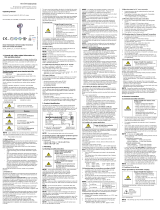 BD|SENSORS DS 400 Operating instructions
BD|SENSORS DS 400 Operating instructions
-
 BD|SENSORS DMP 343 Operating instructions
BD|SENSORS DMP 343 Operating instructions
-
IFM PC5104 Operating instructions
-
IFM PC5112 Operating instructions
-
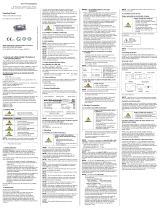 BD|SENSORS DMP 304 Operating instructions
BD|SENSORS DMP 304 Operating instructions
-
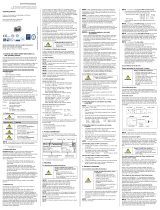 BD|SENSORS DMP 457 Operating instructions
BD|SENSORS DMP 457 Operating instructions


